Simulation Standard Technical Journal
A Journal for Process and Device Engineers
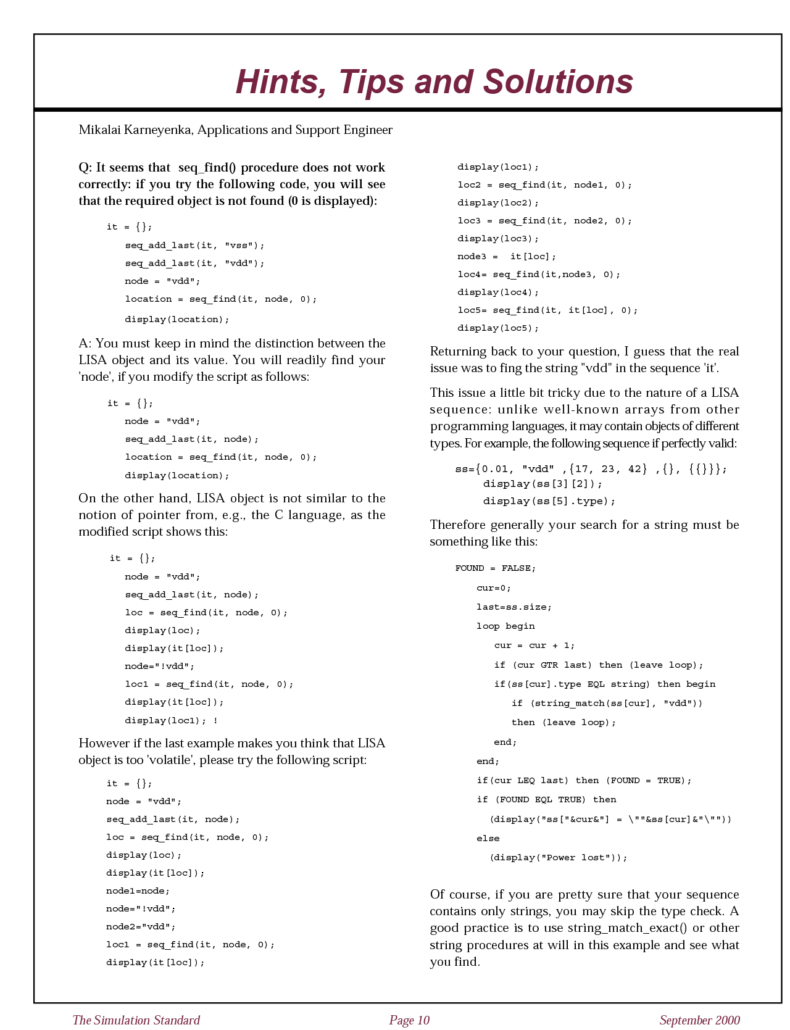
Expert Hints, Tips, and Solutions: Object Scripting, Layer Color Palette, Big Measurements
Q: Often I need to measure big objects. It order to position the ruler precisely I must zoom in at one end, zoom out that zoom again in at the other end. Is it possible too make this operation more convenient? For example, can I start the measurement in one window and finish it in another one?
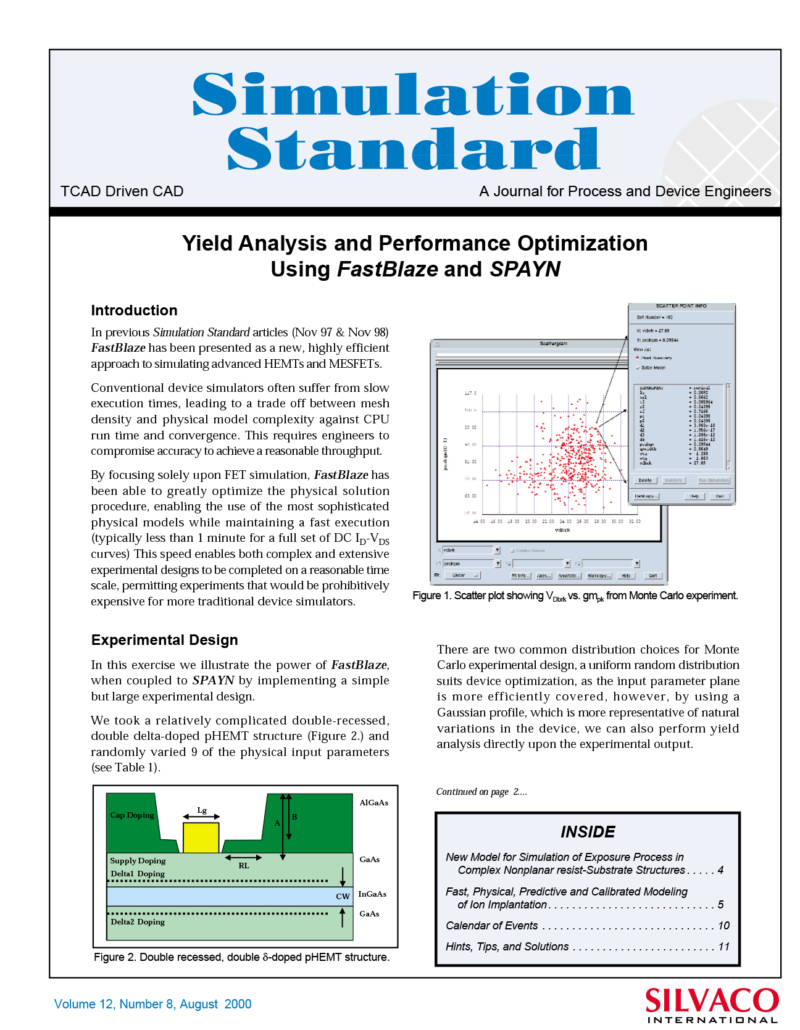
Yield Analysis and Performance Optimization Using FastBlaze and SPAYN
In previous Simulation Standard articles (Nov 97 & Nov 98) FastBlaze has been presented as a new, highly efficient approach to simulating advanced HEMTs and MESFETs. Conventional device simulators often suffer from slow execution times, leading to a trade off between mesh density and physical model complexity against CPU run time and convergence. This requires engineers to compromise accuracy to achieve a reasonable throughput.
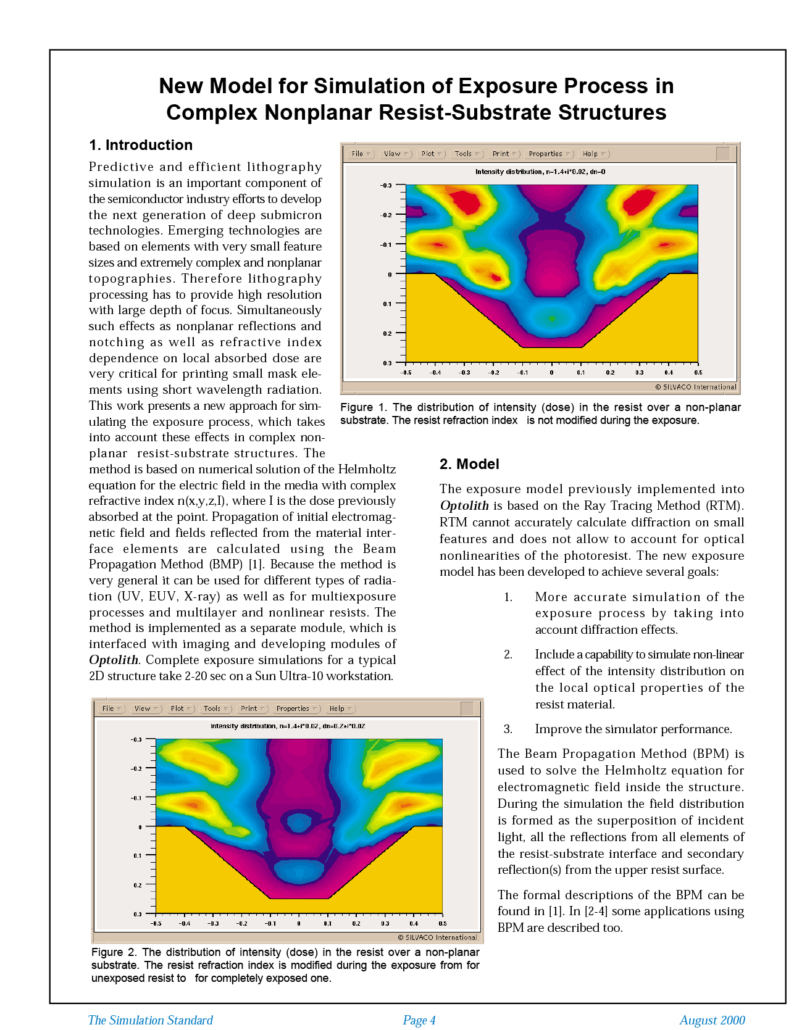
New Model for Simulation of Exposure Process in Complex Nonplanar Resist-Substrate Structures
Predictive and efficient lithography simulation is an important component of the semiconductor industry efforts to develop the next generation of deep submicron technologies. Emerging technologies are based on elements with very small feature sizes and extremely complex and nonplanar topographies. Therefore lithography processing has to provide high resolution with large depth of focus. Simultaneously such effects as nonplanar reflections and notching as well as refractive index dependence on local absorbed dose are very critical for printing small mask elements using short wavelength radiation. This work presents a new approach for simulating the exposure process, which takes into account these effects in complex nonplanar resist-substrate structures.
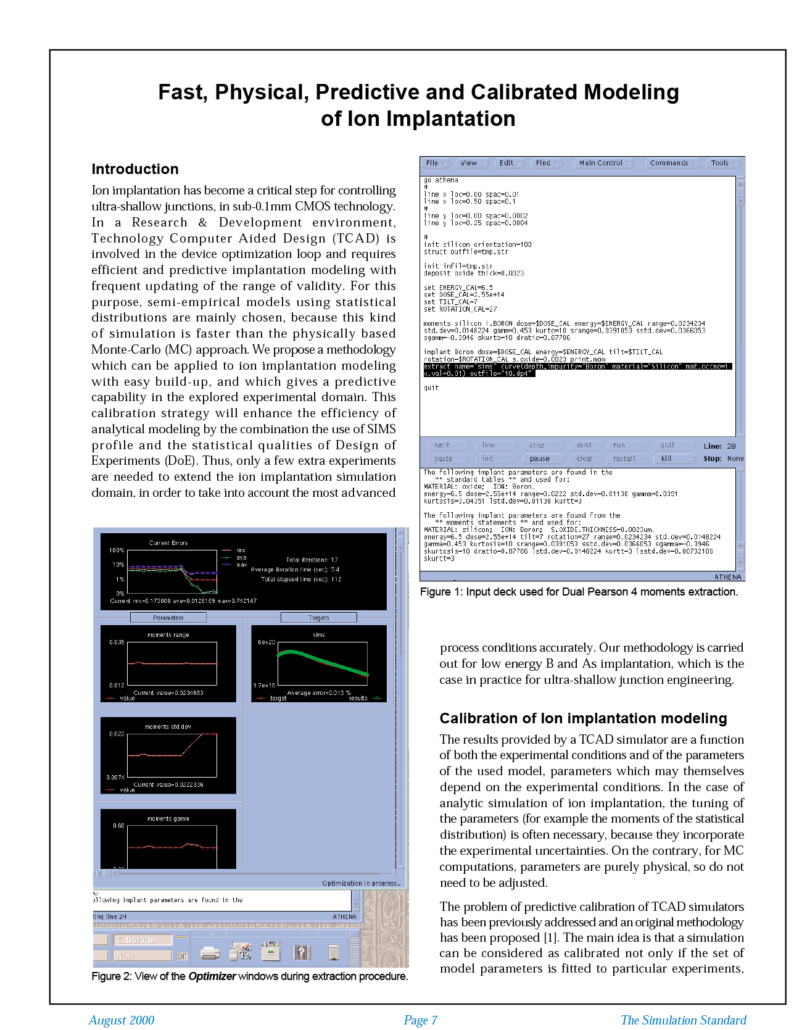
Fast, Physical, Predictive and Calibrated Modeling of Ion Implantation
In a Research & Development environment, Technology Computer Aided Design (TCAD) is involved in the device optimization loop and requires efficient and predictive implantation modeling with frequent updating of the range of validity. For this purpose, semi-empirical models using statistical distributions are mainly chosen, because this kind of simulation is faster than the physically based Monte-Carlo (MC) approach. We propose a methodology which can be applied to ion implantation modeling with easy build-up, and which gives a predictive capability in the explored experimental domain.
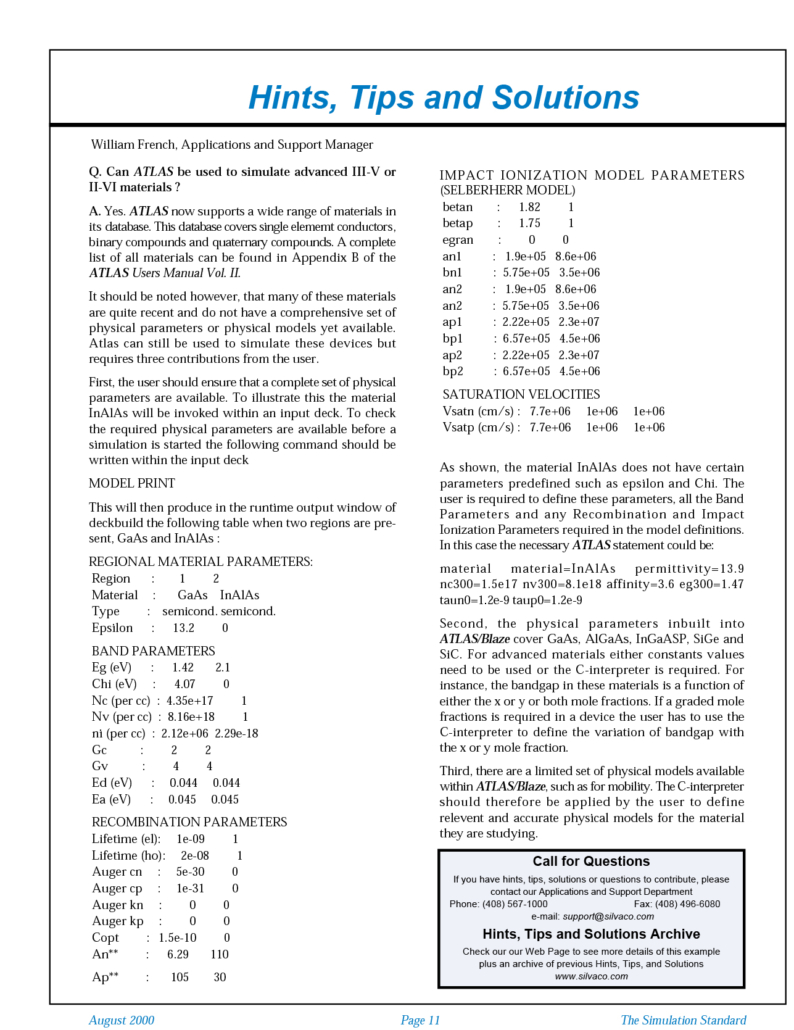
Can Atlas be used to simulate advanced III-V or II-VI materials?
Yes. ATLAS now supports a wide range of materials in its database. This database covers single element conductors, binary compounds and quaternary compounds. A complete list of all materials can be found in Appendix B of the ATLAS Users Manual Vol. II.
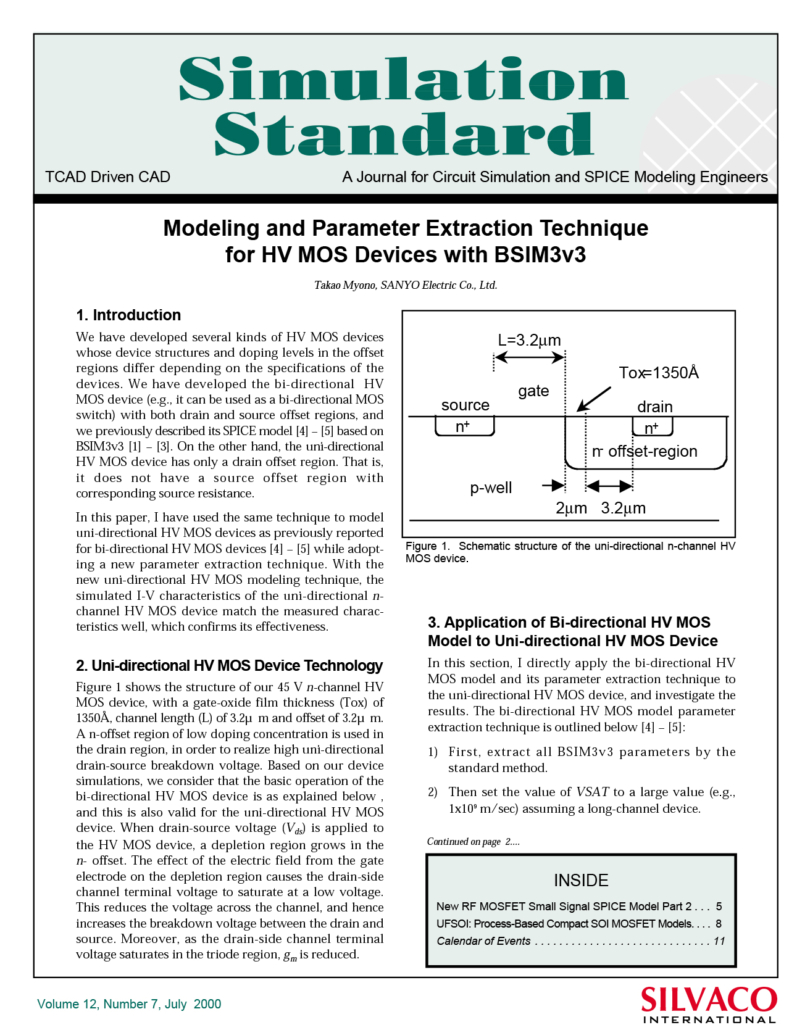
Modeling and Parameter Extraction Technique for HV MOS Devices with BSIM3v3
In this paper, I have used the same technique to model uni-directional HV MOS devices as previously reported for bi-directional HV MOS devices [4] -[5] while adopting a new parameter extraction technique. With the new uni-directional HV MOS modeling technique, the simulated I-V characteristics of the uni-directional n-channel HV MOS device match the measured characteristics well, which confirms its effectiveness.

